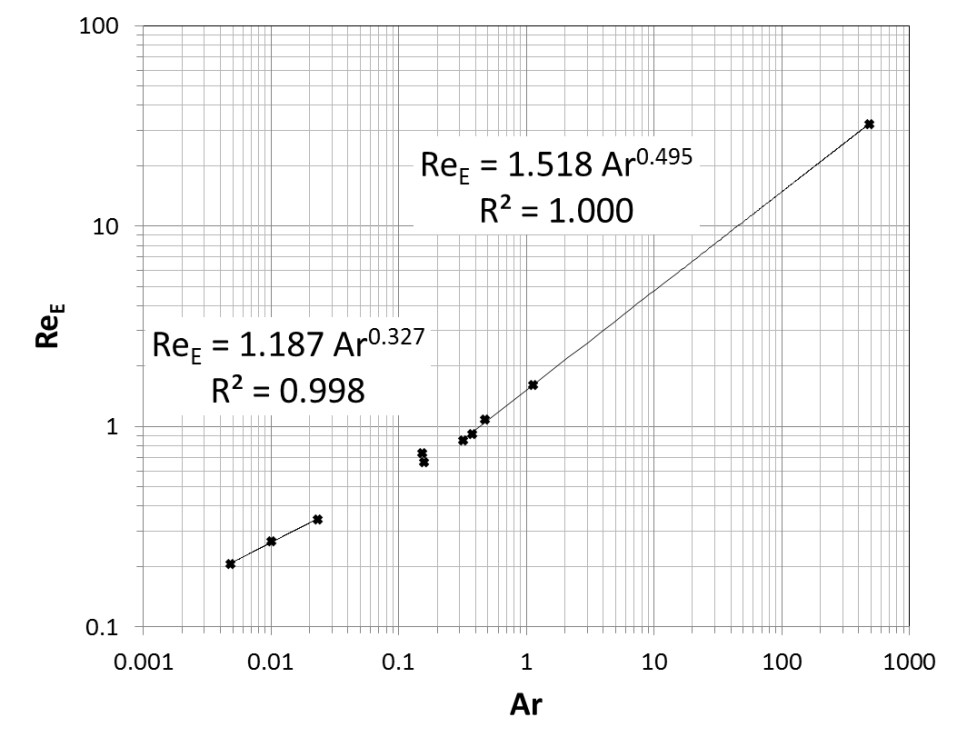(256a) Obtaining Relevant Rheological Data and Its Application to Single and Multiphase Mixing Processes - Suspension of Solids in Non-Newtonian Fluids
AIChE Annual Meeting
2020
2020 Virtual AIChE Annual Meeting
North American Mixing Forum
Mixing in Rheologically Complex Fluids and Polymeric Systems
Tuesday, November 17, 2020 - 8:00am to 8:15am
Where data has been provided, the most frequent problem is the range of shear rates over which it has been obtained, or over which flow curve models have been fitted. Methods of selection of appropriate shear rate ranges to the process will be discussed, with examples from real processes where improved rheological data and modelling leads to benefits in both process understanding and performance. It will be highlighted that shear rates are almost exclusively used to calculate an “effective viscosityâ€, necessary to apply a supplementary model including the effect of viscosity, and are not designed to characterise the intensity of mixing in any way.
While frequently the rheologically complex nature of fluids can mean process performance deviates significantly from that with Newtonian fluids, sometimes simpler process models developed for Newtonian fluids can be successfully applied. An example of work performed for the Fluid Mixing Processes (FMP) consortia will demonstrate how in some cases solids suspension processes using complex rheology fluids can be predicted in this fashion.
Tests were performed using a fully baffled 1.0m diameter torispherical based vessel fitted with a single hydrofoil impeller (D/T = 0.4 and C/T = 0.25). Water and various concentrations of Natrosol 250 HR polymer (hydroxyethylcellulose) were used, with flow behaviour indices ranging from 0.98 down to 0.54 as the polymer concentrations increased. Sand having an average particle size of 312 μm was used at 5% v/v concentration.
Grenville et. al. (2015) showed that Njs with Newtonian fluids could be predicted using a model based on suspension of solids by eddies in the inertial subrange. Where the particle Archimedes number, was greater than 0.02 and the eddy Reynolds number on the scale of the particle was greater than 0.1, the eddy Reynolds number was proportional to the Archimedes number to the 0.5 power, meaning Njs is independent of liquid viscosity. At Archimedes numbers less than 0.02, particles were suspended by eddies in the viscous sub-range, where the eddy Reynolds number is proportional to Archimedes number to the one third power, and Njs is a function of viscosity.
The FMP wall shear rate model (not presented in detail) calculates an effective viscosity (assumed to be at or close to the vessel wall) allowing the prediction of blend time with shear thinning fluids in the transitional regime using a correlation developed for Newtonian fluids. A "Corsin shear rate" is also defined, based on the impeller Power number, the tip speed and an appropriate lengthscale related to the impeller dimensions. It was found that by using both shear rate models to calculate an effective viscosity, the dependencies of particle Archimedes number and eddy Reynolds number at just suspension were the same matched those expected for Newtonian fluids, though the transitional values of both Archimedes number and eddy Reynolds number were changed. The Corsin shear rate model proved to perform slightly better than the wall shear rate model, allowing Njs to be predicted accurately using the Grenville et. al. (2015) correlation over an appropriate Archimedes number and eddy Reynolds number range.
